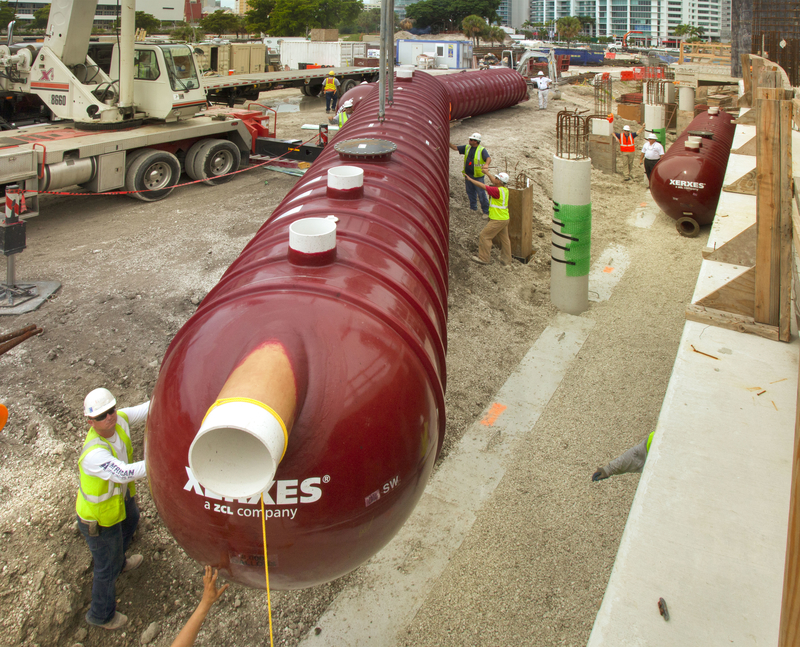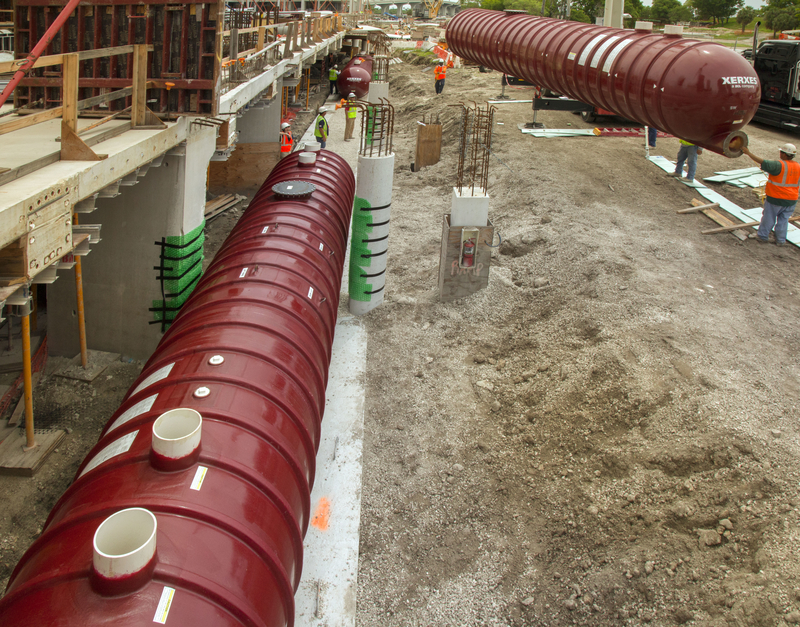
They are big, they are brown, and they make a difference!
The new Phillip and Patricia Frost Museum of Science is designed to be one giant exhibit, and this includes the stories of the science and technology involved in its construction. This last week one rather large and vital component was delivered to the site: the water cisterns. These cisterns have the important task of helping the Museum conserve and re-use massive amounts of water. For example, water that runs off the roof and the plaza may be used in the air conditioning system, and potentially for irrigation for the green spaces around the Museum. With native plantings over the majority of the site, the need for irrigation will be small after the initial season when plants are getting established. But the air conditioning system, especially for the aquarium, will always require water, so our cisterns will have a major impact on reducing our water use.
It’s not possible to always capture all the water, so to further the Museum’s goal of being as environmentally friendly and efficient as possible, the rain water on Museum Drive will drain towards a vegetated area, which will be part of a wetlands exhibit. Designed to tell the story of how water rises and falls throughout the Everglades, this area will also reduce the impact on the drainage system, slowing run-off and allowing water to soak into the ground over a period up to 72 hours – long enough to be beneficial for the ground and vegetation, but not so long as to allow mosquitoes to breed.
Our engineers, Fraga Associates, working with Executive Architects Rodriguez and Quiroga, have made sure we get this balance right: use as much as we need and manage the excess well. Irene Fraga, Chief Engineer, says “We think there are so many interesting stories and snippets of information for people to discover, we are proud to make this a real Miami building, that everyone will enjoy.”
